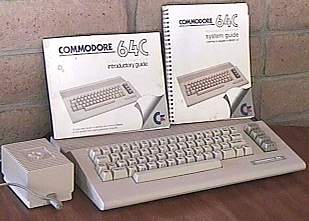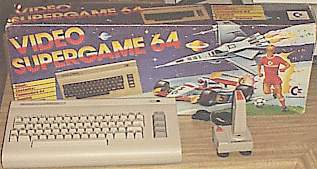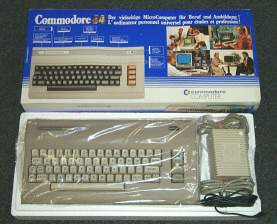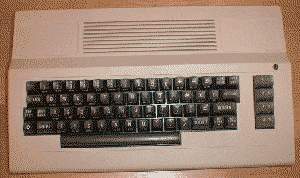Commodore 64C, Aldi, C64G
 In late 1985-86, Commodore repackaged its masterpiece
C64 in a sleek new case
design, making it look a little more like their new Commodore 128.
Along with the new look came a new motherboard. Early C64c computers had a later model C64 board.
When production ramped up, however, they came with the new (and less expensive) 'E' boards. Fewer ROM
chips and less expensive versions of the SID (8580) were just a few of the "improvements" (there is still
much dispute as to whether the new SID is really an upgrade).
All versions of the C64C came stock with a brand new GUI operating system from Berkely Softworks
called GEOS.
In late 1985-86, Commodore repackaged its masterpiece
C64 in a sleek new case
design, making it look a little more like their new Commodore 128.
Along with the new look came a new motherboard. Early C64c computers had a later model C64 board.
When production ramped up, however, they came with the new (and less expensive) 'E' boards. Fewer ROM
chips and less expensive versions of the SID (8580) were just a few of the "improvements" (there is still
much dispute as to whether the new SID is really an upgrade).
All versions of the C64C came stock with a brand new GUI operating system from Berkely Softworks
called GEOS.
 Meanwhile, over in Deutschland, the C64-II (as it was called) was not very well received. The very
popular music keyboard overlays did not fit the sleek new cases, and unhappiness prevailed. Commodore
therefore decided to placate them with a C64C in the familiar breadbox shape. Dubbed the "C64g" (G for
Germany), this computer comes with the same 'E' board as the C64c, and it quieted the outrage of music
lovers there.
Meanwhile, over in Deutschland, the C64-II (as it was called) was not very well received. The very
popular music keyboard overlays did not fit the sleek new cases, and unhappiness prevailed. Commodore
therefore decided to placate them with a C64C in the familiar breadbox shape. Dubbed the "C64g" (G for
Germany), this computer comes with the same 'E' board as the C64c, and it quieted the outrage of music
lovers there.
 Following the C64G was another C64 variation that was dubbed the "Aldi"
(after the cheap five-and-dime stores they were sold in) by the German 64'er magazine.
This derogatory name reflected the magazines feelings about it's design,
which does not include the necessary 9V on the user port. The picture on the
right shows the old brown breadbox casing with the C64C's white keys.
Following the C64G was another C64 variation that was dubbed the "Aldi"
(after the cheap five-and-dime stores they were sold in) by the German 64'er magazine.
This derogatory name reflected the magazines feelings about it's design,
which does not include the necessary 9V on the user port. The picture on the
right shows the old brown breadbox casing with the C64C's white keys.
 In Australia, third party companies were scrambling to beat Commodore to the punch. They
released their own "upgrade" cases, allowing owners of existing C64s to put their motherboards and
keyboards in the sleek new cases.
In Australia, third party companies were scrambling to beat Commodore to the punch. They
released their own "upgrade" cases, allowing owners of existing C64s to put their motherboards and
keyboards in the sleek new cases.
| CPU |
CSG 8500
6510 compatible
1 Mhz speed
|
| RAM |
64 kilobytes
|
| ROM |
C64 Kernal/Basic 2.0
|
| Video |
MOS 8565 "VIC-II"
320 x 200 Hi-Resolution
40 columns text
Palette of 16 colors.
|
| Sound |
CSG 8580 "SID"
3 voice stereo synthesizer/digital sound capabilities
|
| Ports |
MOS 6526 CIA x2
2 Joystick/Mouse ports
Round female DIN CBM Serial port
Male edge-connector CBM Datasette port
Male edge-connector parallel programmable "User" port
Round DIN CBM Monitor port
Female edge-connector C64 expansion port
Power switch
|
| Kyboard |
Full-sized 62 key QWERTY
8 programmable function keys
4 direction 2-key cursor-pad
|
Personal Note:
This line of computers I purchased only for their collectibility,
although I do think the new case design is nice. I had many friends
with this model when I was younger, and was always impressed by the
feel. My C64c was obtained from a local Austin Good Will Computerworks.
The C64g came from a German auction site, while the Australian C64 and
the C64-II (German) came from an eBay
auction. My Aldi was a kind sale from Stefan Walgenbach.